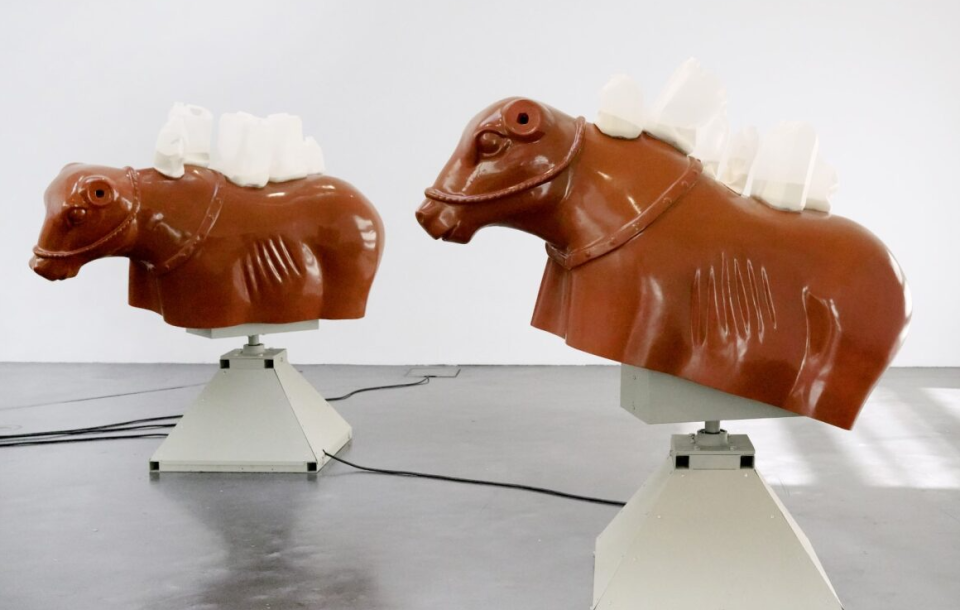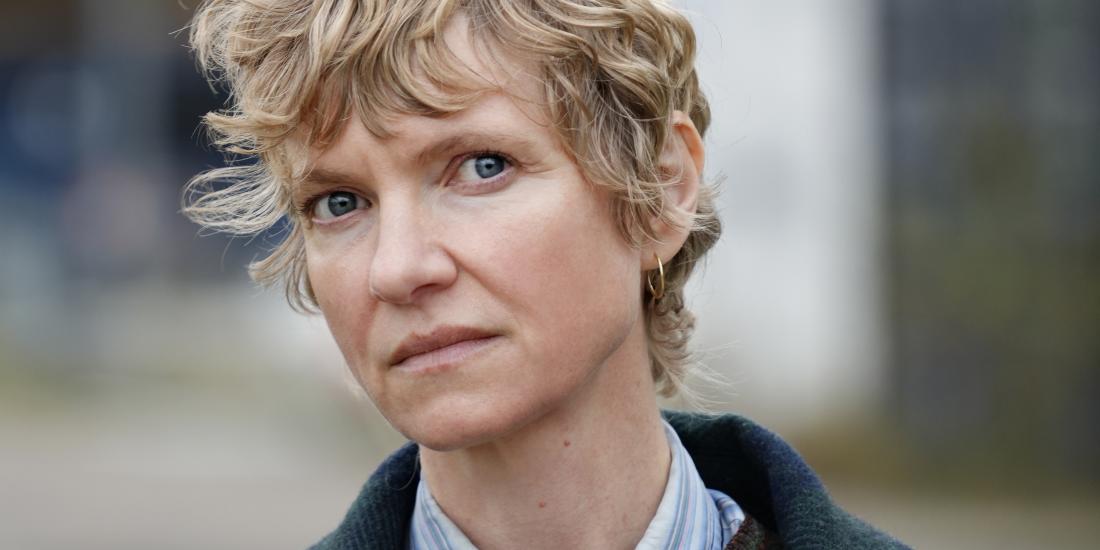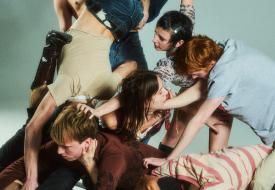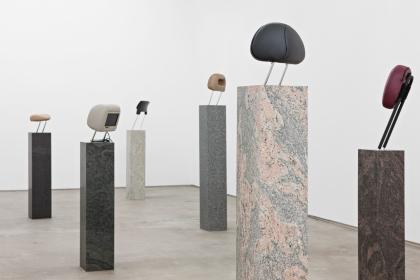One of Beier’s main interests as an artist is in the many different meanings that can reside in an object, and how that meaning changes across contexts and over time. She has exhibited internationally, for instance, at the Tamayo Museum in Mexico City, Helsinki’s Kiasma, and in the High Line park in New York City. Having just completed a year of survey exhibitions – and in the spirit of ‘Embracing Complexity’ – here she reflects on how objects change, not only in the world, but inside her own art practice.
Kristian Vistrup Madsen: Last year, your work was subject to three survey exhibitions in Finland, Mexico and France. The survey exhibition, or retrospective, as it is sometimes called, has this strange function of streamlining the narrative of the past. Like in cleaning out a storage, each of your works has been picked up, asking: what is this, what has it meant, and what could it mean now? Has this experience changed the way you understand and relate to your own work?
Nina Beier: When putting together these survey shows I became very aware that making sense of your own work is an incredibly risky endeavour. Because understanding something implies that you have somehow managed to wrap your head around it, like a fence, so it can’t move as freely.
We started out gathering not only all the images ever taken of my work, but also all the text produced, including interviews, reviews, mediation and essays. We categorised and archived everything. And rereading this material made me reflect on how the language surrounding my work has evolved. In the early days, my main focus was on ‘confused objects’, a term I used to refer to things that sat on a spectrum between being themselves and a representation of themselves – like human hair wigs, fake designer bags, dust-coloured pigment, and sometimes even more confusing things like breast milk formula based on cow’s milk, and cartoon-like dog bones made of pig skin. I am consistently curious about this type of object and they are still confusing to me. (I just made an exhibition where I covered the floor with cheap knockoff Cornetto-style ice creams, which are so artificial they hardly melt and end up “frozen” in a half melted shape for weeks.) But I noticed that, in recent years, my works tend to be mediated more and more according to a thematic logic, rather than for example the formal strategies that they employ. I guess that an artwork will always be used as a mirror of the times. But what became obvious to me as we looked back on my work and all the shifting interpretations of it, is that meaning really resides in the object itself, and not around it.

Madsen: This is interesting since we live in a time where discourse and mediation are often understood to be everything. So what do you mean by meaning in this context?
Beier: When I speak my body betrays me, you observe how I switch in the seat, the redness of my cheeks, the volume of my voice when I feel I am onto something, the way I look down when I am not – and this information is as important as the words coming out of my mouth. In a similar way I feel that meaning seeps out of my objects. Ultimately, I think, meaning is less an intentional statement and more what is wordlessly passed along.
Madsen: Of course the lasting attraction of an artwork comes from what we don’t know – can’t know – about it. But doing big survey shows puts artists under pressure to provide the legible and sensical narratives around the art that the big institutional machineries increasingly want. To me, your work is fundamentally disruptive of narrative. The objects you use and their connotations – the cultural prestige, or lack of, that we associate with them – are always challenging one another, destabilising what they can be said to mean.
Beier: I really try to make the objects speak for themselves. I am drawn to objects that have been through a lot, things that are somehow in a state of transition, or find themselves fallen out of favour. When objects have lost their power over us, and we are no longer seduced by them, this is when we can see them clearly. Be it a cigar, a cruise ship, a guardian lion or a high heel. Tangling them up with other objects allows for a myriad of possible readings. But at the same time I have participated in an institutional discourse that tends to choose one or two of the narratives and spell them out, giving little space for viewers’ imaginations, and for the material and formal aspects of the work to unfold. Like a parent speaking over or on behalf of their child.
I know my work is smarter than I am. But what do we do when the work is always translated back into words? I have been thinking about this: how can my work claim a space beyond language and reason, beyond agenda?
Madsen: This ‘aboutness’ is really a problem in contemporary art. Because it implies that the artist knows exactly what their point is. I think art is more about undercutting what we think we know about things, like bathtubs and tombstones and mechanical bulls. What happens if we strip them of connotation, or graft other objects onto them? It is interesting that we are both able to see them more clearly, as you say, and yet it seems like we know less about them than ever. The objects you make are at once full of stories and strangely mute.
Beier: I like that! I tend to pick out objects that carry a lot of messy baggage with them, and I sometimes feel their stories are too loudly present in the space, wishing they would be more quiet. I mean, I am happy for people to find paths through the meaning they extract from them, ideally informed by a mix of their physical experience, their previous knowledge, or even what factual information is provided by the institution. But every institution is under pressure to be good and right. And what I am wary of is that pressure getting passed on to the art. I have no desire to be right about stuff. I don’t want to lecture anyone. I can honestly speak to the things I am implicated or complicit in, and my curiosity takes me to the things that are difficult, unresolved, and contradictory. This means my work often sits in an uncomfortable space. When I covered the floor of a museum with thousands of potted plants, these mass-produced domesticated living things in their fake terracotta plastic pots recreated an almost digital-looking image of a romantic flower meadow, or perhaps an image of something artificial, like industrial farming. But as the flowers died, the work was no longer an image, and the discomfort of this object’s reality was not something the work only pointed to, but something it did for itself.


